
[Click on image for larger version]
This is the year in the East Coast cicadas’ 17-year life cycle when they come out of the ground to sing and molt and mate. This guy was in one of the abbey’s arbor vitae trees this morning.
Watching a bewildering world from the middle of nowhere

A Carolina wren in a sycamore tree
Recently a visitor to the abbey made a list of the birds she identified here during a few days of birdwatching. The visitor is a friend of Ken’s, Rebecca, from Washington D.C. Here is her list of birds seen at or near Acorn Abbey:
1. Loggerhead Shrike
2. Carolina Wren
3. American Crow
4. Barred Owl
5. Carolina Chickadee
6. Common Yellowthroat
7. Cooper’s Hawk
8. Northern Cardinal
9. Red-bellied Woodpecker
10. Ruby-throated Hummingbird
11. Tufted Titmouse
12. Eastern Phoebe
13. Eastern Bluebird
14. Cerulean Warbler
15. Chipping Sparrow
16. Scarlet Tanager (en route to Acorn Abbey)
17. White-breasted Nuthatch
18. Pileated Woodpecker (Hanging Rock)
19. Wild Turkey (Hanging Rock)
20. Turkey Vulture (Hanging Rock)
21. Black Vulture
22. Eastern Towhee
23. House Sparrow
24. Mourning Dove
25. Northern Mockingbird
26. Brown-headed Cowbird
27. Pine Warbler
28. Indigo Bunting
29. American Redstart
30. Brown Thrasher
March and April were cold. Spring is about three weeks late this year. Not only that, but the long-range forecast shows below-average temperatures through mid-May, with above-average rainfall. This will do no harm to the spring crops. Cabbage, lettuce, onions, etc., love cool, wet weather. I’m a bit concerned, though, that these early crops will mature so late that we’ll be behind getting the summer crops started — tomatoes, squash, etc. We’ll do everything we can to rush the spring crops to maturity. The irrigation system is in place, though it has been very little needed so far.
This year, we’re mulching heavily, hoping that it will conserve moisture and keep down the weeds. Back in 2011, I recommended a book: Gardening When It Counts: Growing Food in Hard Times, by Steve Solomon. In retrospect, though this book contains lots of good information on water frugality, it steered me wrong in some ways. The author is of the opinion that, if you live in an area with enough rainfall to support deciduous forests, then you can garden without irrigation. He also does not think that mulching is very important. I strongly disagree with him. With summer weather like the weather we’ve had here for the past five years, I am strongly of the opinion that having a reliable garden without irrigation just is not possible. Even when there is rainfall, as summer temperatures rise daily to 95 and above, such rainfall as we get is rapidly dried up, and heat stress and water stress become severe. Mulch, I’m hoping, will help keep the soil cooler and conserve water. As a bonus, the hay we’re using as mulch will decompose into the soil, helping to feed the worms.
Ken has worked like a dog in the garden this year. Sometimes when I look out the window from the comfort of the kitchen and see him working so hard, I feel guilty. But Mark Bittman, writing in the New York Times, has reminded me of a very important principle: a garden without a kitchen (and someone slaving in that kitchen) is useless. Every well tended and productive garden must have a kitchen running at full tilt, with someone working in that kitchen who understands what to do with the stuff coming from the garden. We’ve got that process down. Here at the abbey, the garden and the kitchen are a smoothly functioning unit.

Young lettuce. I hope we’re as covered up with lettuce this year as we were last year. I felt as though I spent half the day every day last spring washing lettuce.
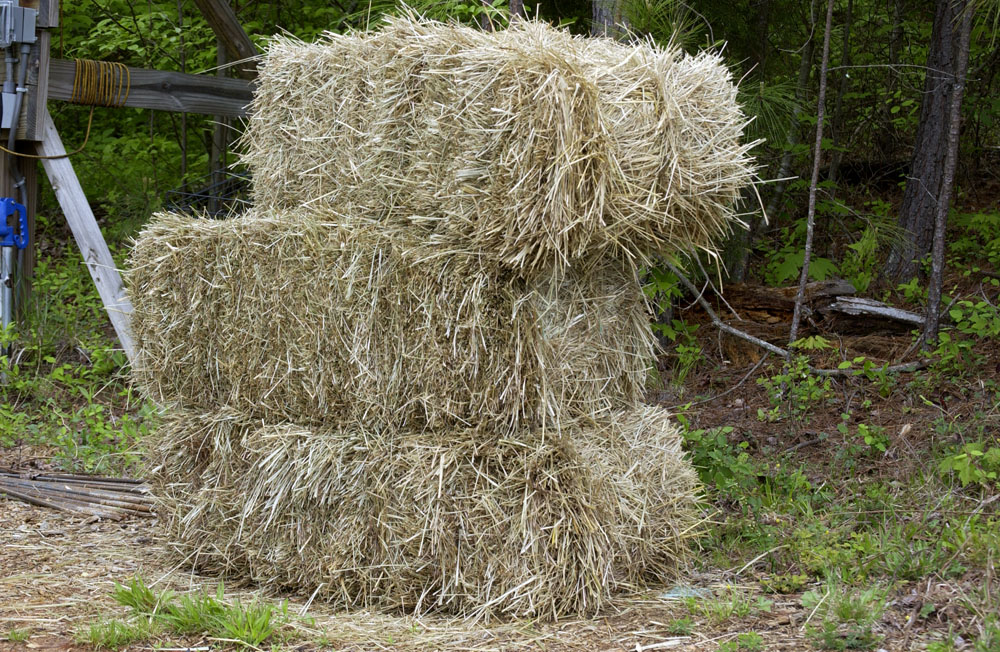
Hay for mulching. We’ve bought it from a farmer near Sandy Ridge for as low as $2 a bale.
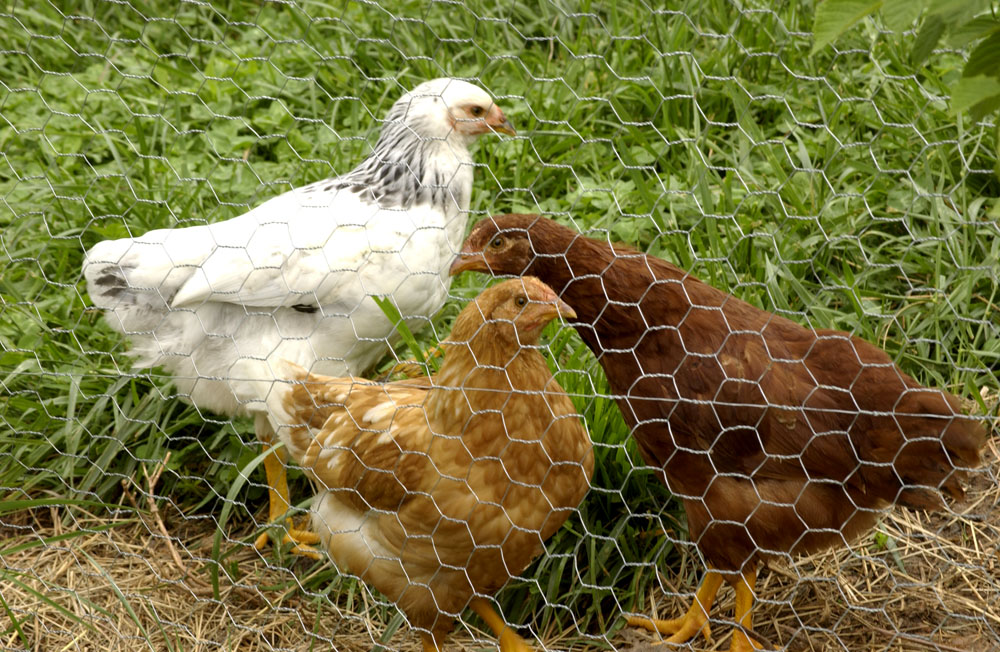
Marilyn, Bridget, and Sophia, the 2013 spring chickens. They’re thriving, and their voices are starting to change into hen sounds rather than cheeps. The abbey now has seven chickens.
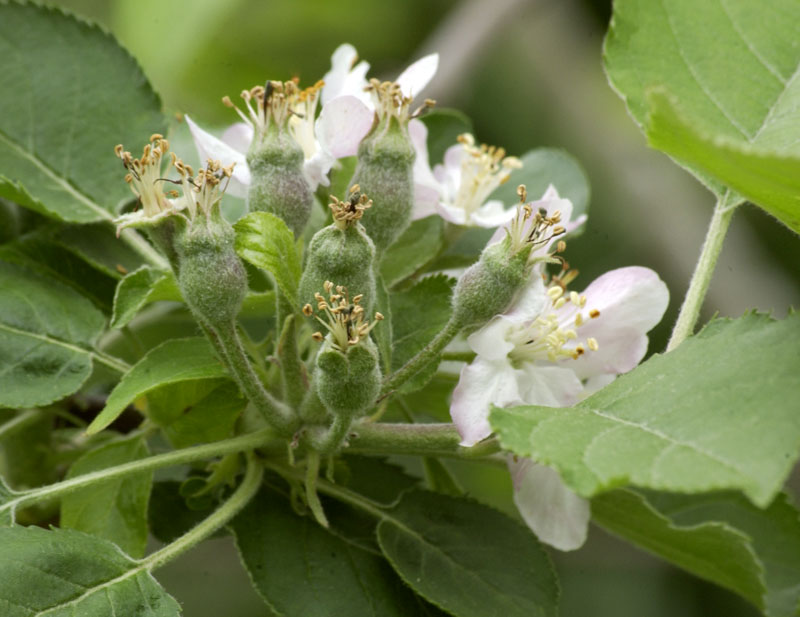
Tiny apples. This is the apple trees’ fifth spring. This year, for the first time, they’ve prolifically set baby apples. I’m hoping for a real apple crop this year.

Click on photos for high-resolution version. Butterfly in the bluets.
There is life at the abbey, but a never-ending winter and a calendar clogged with a heavy burden of anti-fracking political activities has kept everyone down. As for winter, blame a persistent disturbance in the jet stream, which sent arctic air too far south and warm air too far north. Greenland was melting while it was snowing in the southern U.S. The pattern seems to be breaking. There is still time, I think, for April (as the poet Edna St. Vincent Millay said) to come babbling down the hill like an idiot, strewing flowers. Shake a leg, April.

A week ago, this is what we had.
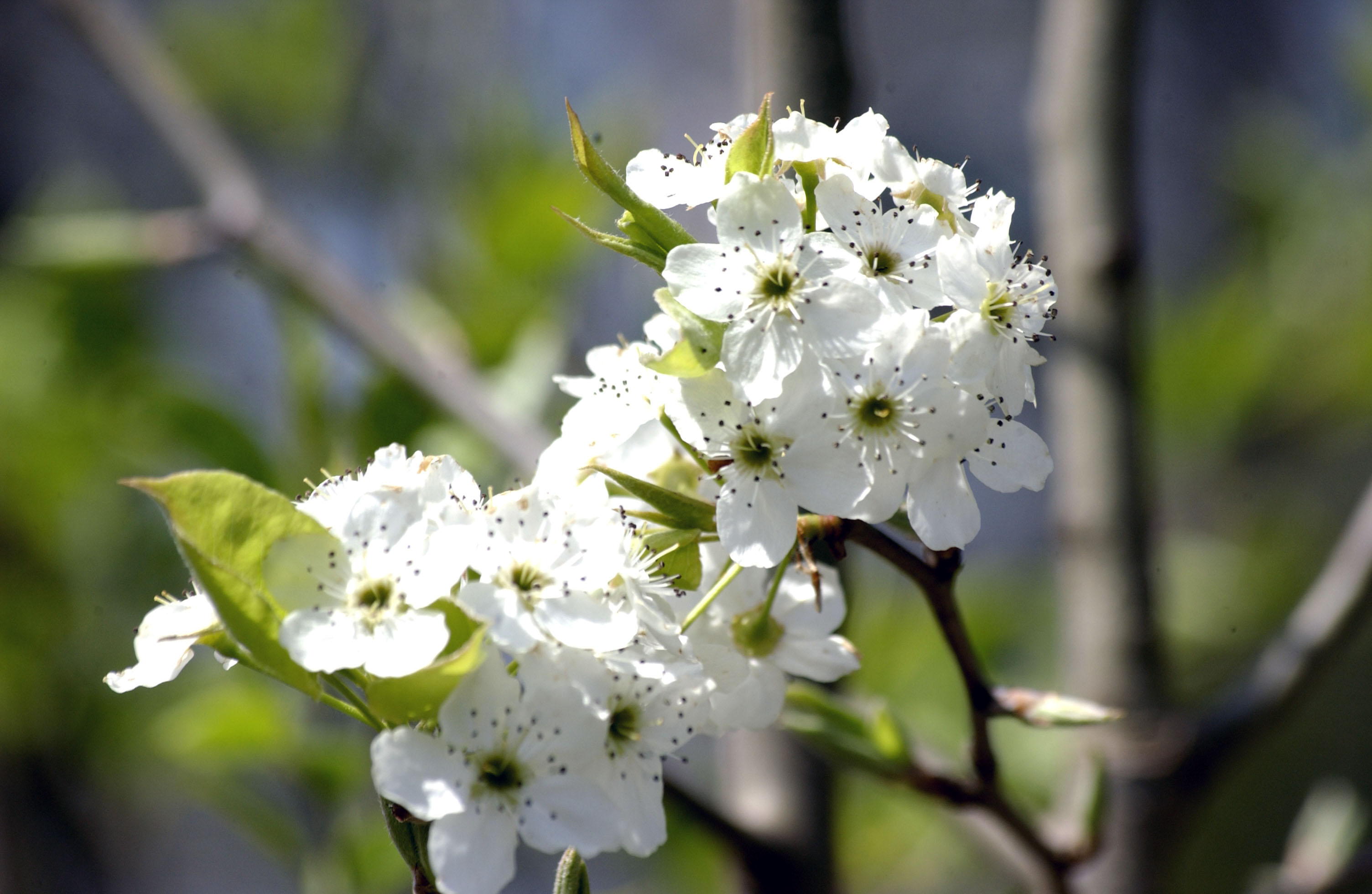
Blossoms on a wild pear tree, illegitimate offspring of the neighboring Bradford pears
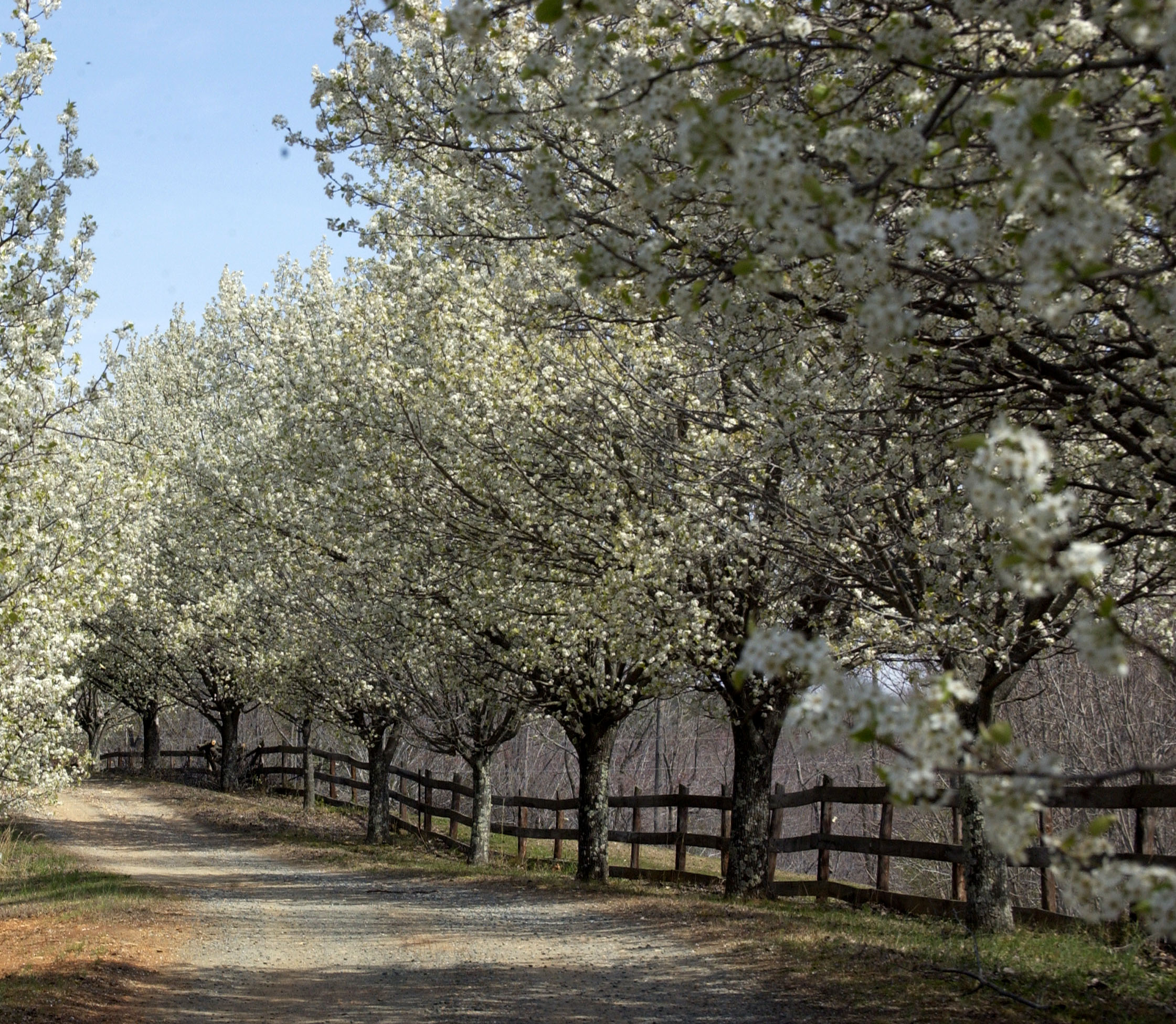
The Bradford pears that spread into the wild, thanks to the birds

A new gate to keep the chickens in the orchard and out of the garden
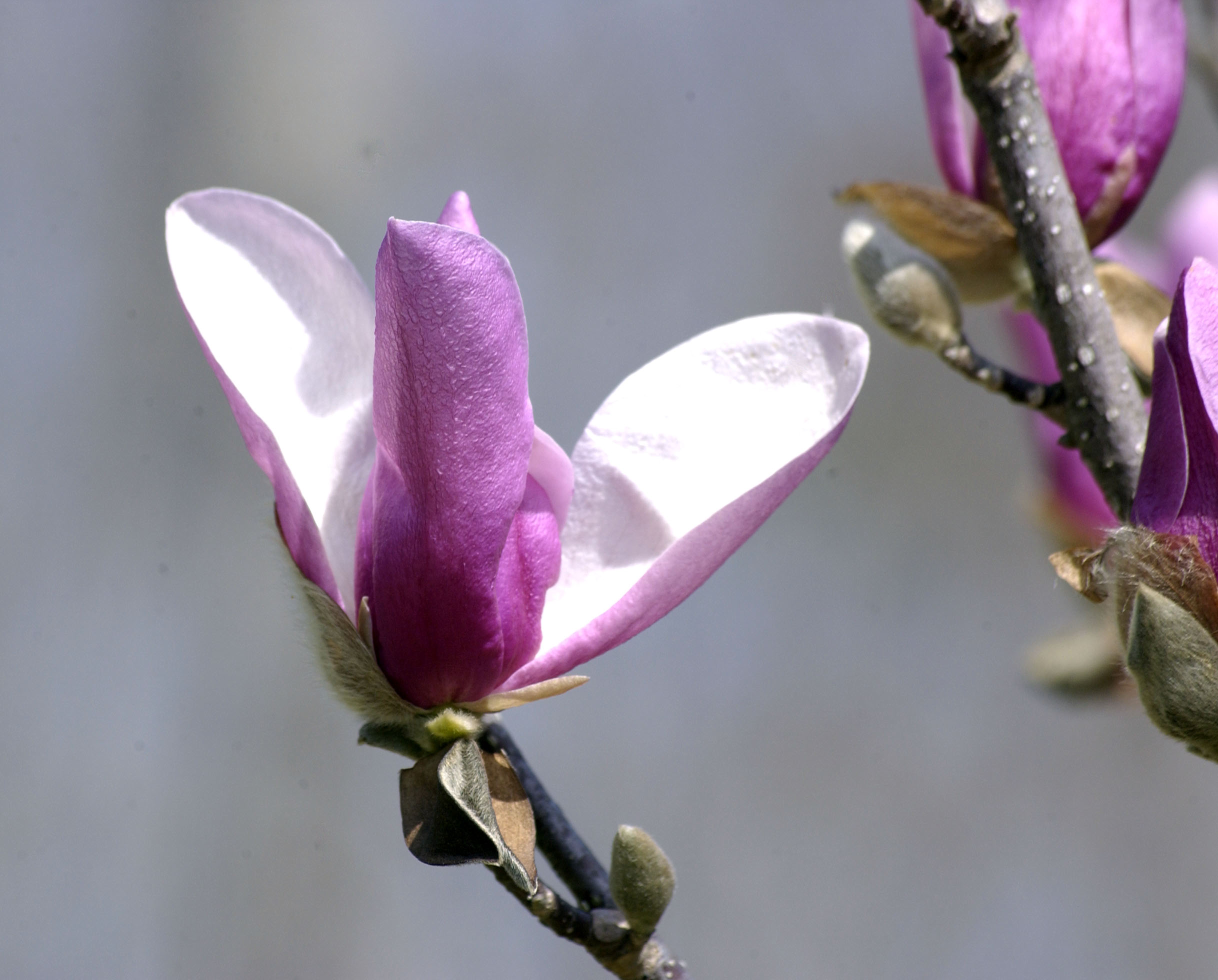
Bloom on a deciduous magnolia, newly planted
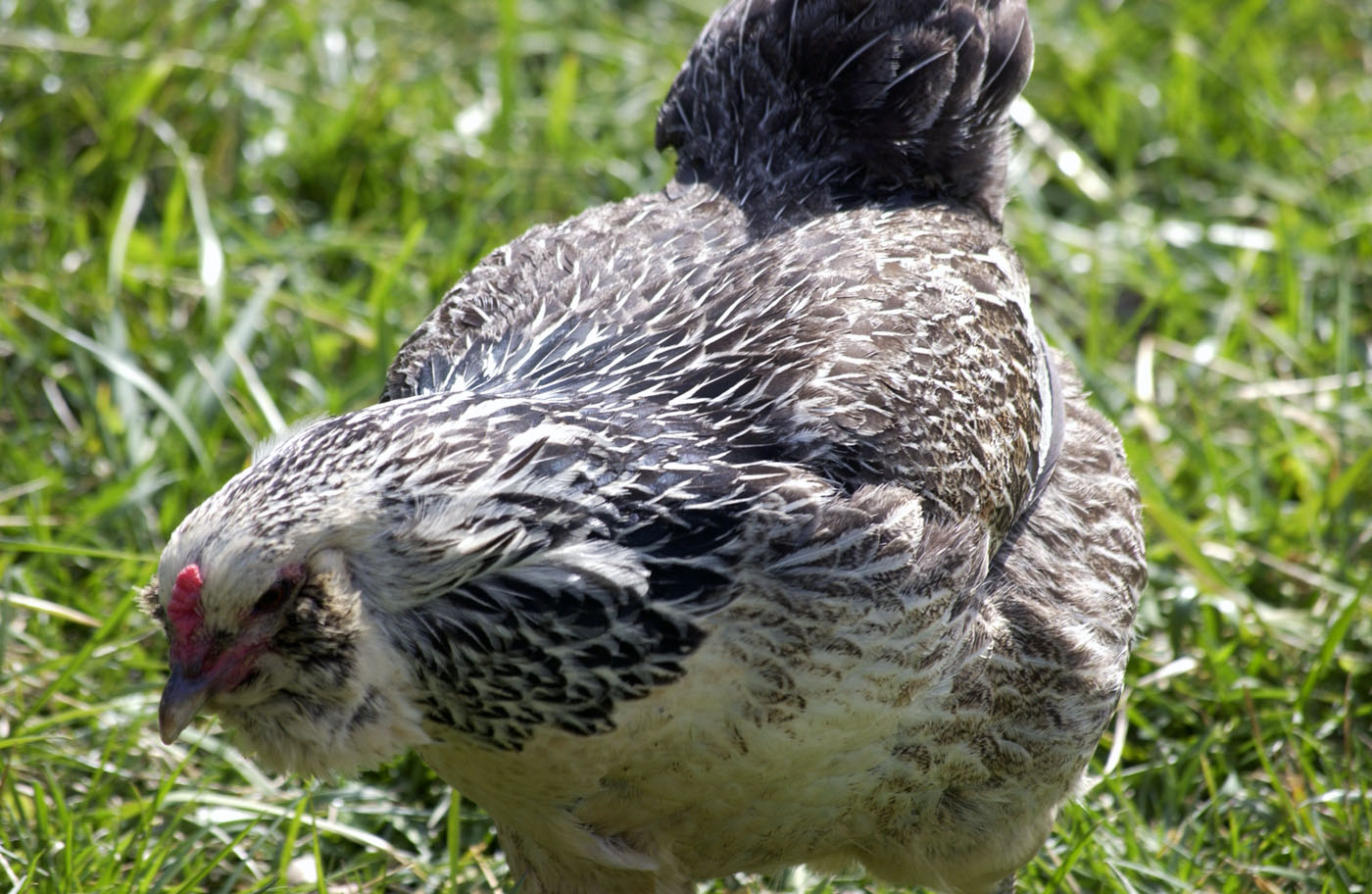
Helen, restless with spring fever
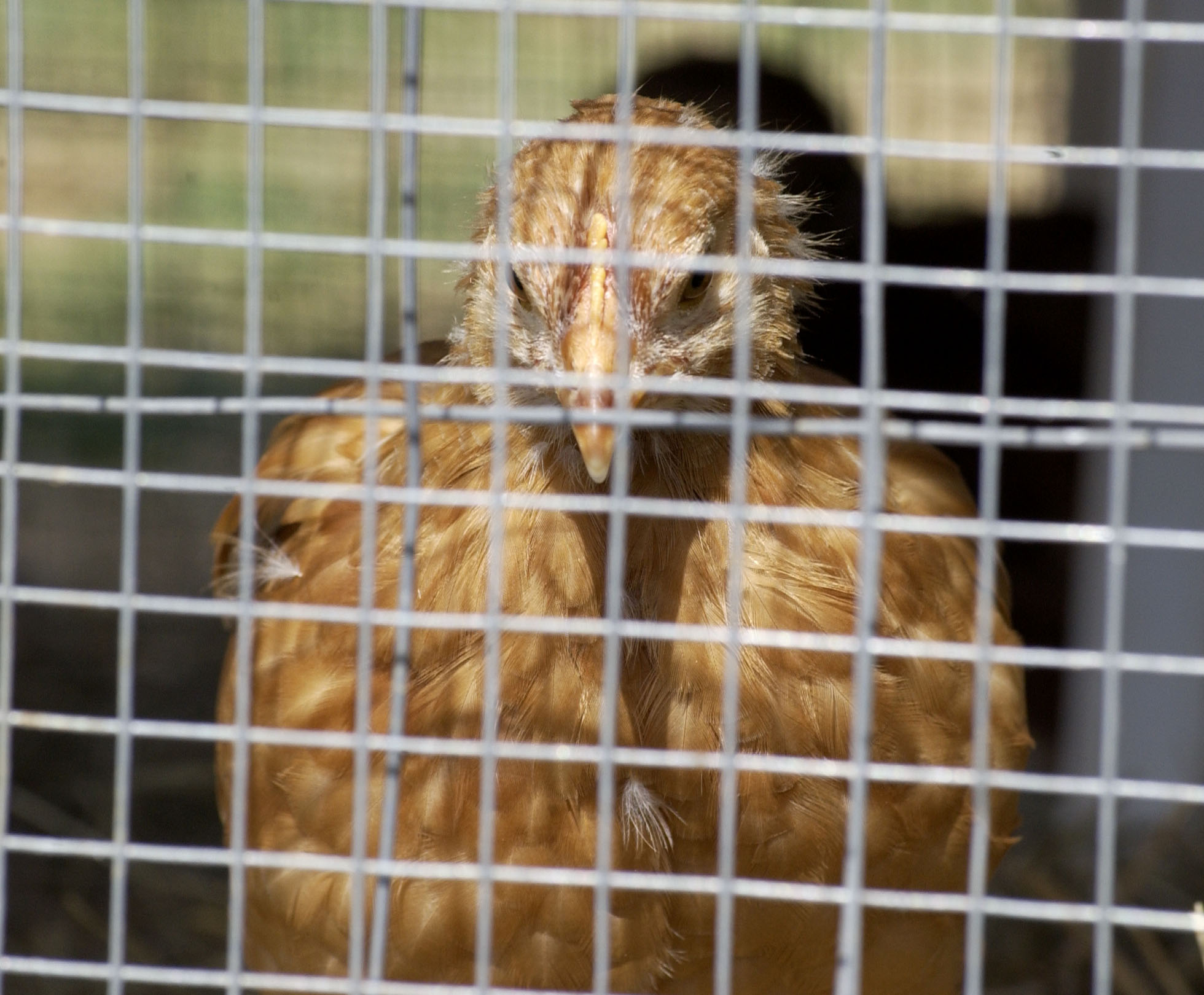
One of the three new spring chickens, still in protective custody. More photos to come. This generation will be named for 1950s starlets.
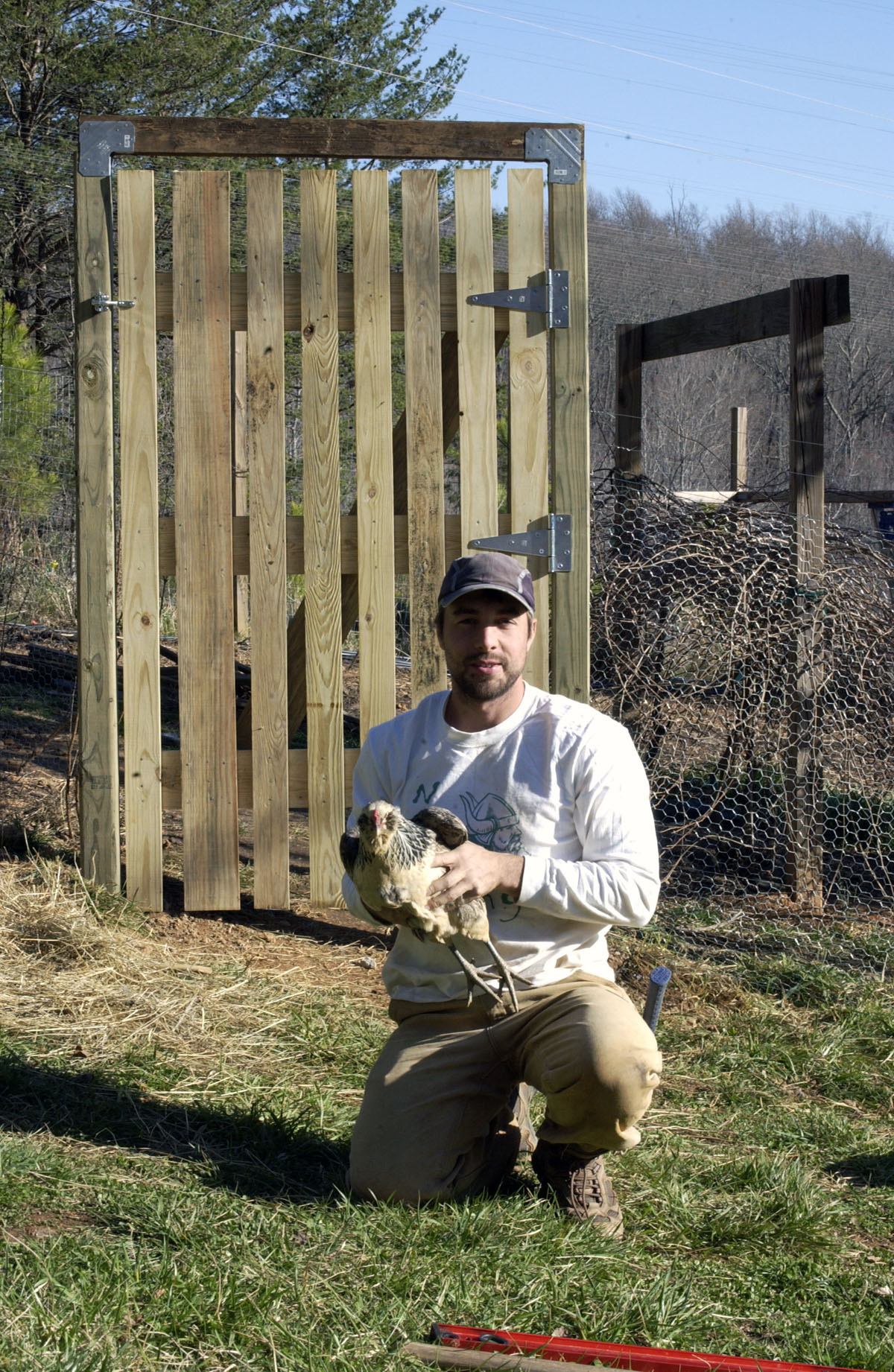
Ken Ilgunas is back and will be here at least for the next few months. He has, I think, been soaking up solitude here at the cloistered abbey, resting up from throwing himself at the world-out-there in his last adventure. He promises to post to his blog soon. We have some spring projects planned, of course. And Ken will have a busy time soon around the release of his book on May 14.
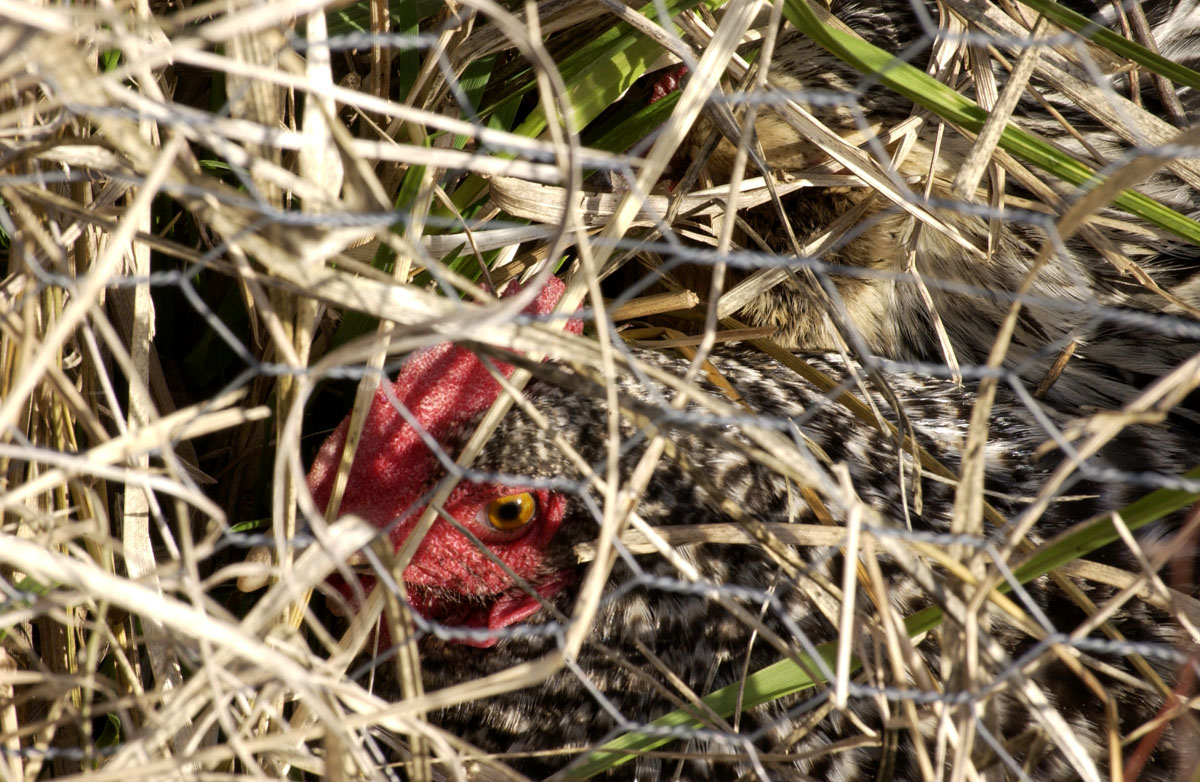
There actually are two chickens in this photo. Helen is tucked in behind Josephine. You can see a bit of Helen’s comb near the top of the photo.
It has been well over a year, maybe almost two years, since there has been a hawk attack at the abbey. We had a hawk attack today, and, thanks to the cat, I scared the hawk away before any chickens got hurt.
I was lying on the bed reading. Lily was with me, snoozing under a blanket. It is possible that I heard chicken sounds, but I don’t have a clear recollection of that. It was Lily who alerted me that something was up. She jumped out from under the blanket with a look of alarm and let me know, by the direction she was looking, that something was going on up the hill where the chickens are. I dashed out in my sock feet and scared off a hawk. It was a big hawk, with a wingspan of three and a half to four feet. When it saw me, it took off from the ground near the chicken house. It flew through the overhead fishing line that acts as a hawk deterrent and and flew to the edge of the woods. It perched on a limb. While I was looking for a rock to throw at it, it flew off.
The girls had hidden themselves pretty well, especially Josephine, who I couldn’t find at first. Fanny and Fiona were hunkered in a corner near the asparagus patch. Josephine was well hidden in some thick grass above the chicken house. Though Helen later joined Josephine in the grass, when I first saw Helen she was on the ground near the chicken house. It’s possible that Helen tried to engage the hawk. She is the biggest and bravest of the four chickens.
When chickens see aerial predators, their instincts kick in, and they’re good instincts: Engage and defend yourself if you have no choice, otherwise hide quickly, keep your tail feathers and head down, and don’t squawk.

Fanny and Fiona, hunkered down beside the asparagus bed. Notice how their tail feathers are lowered. They were farther away from the scene than Helen and Josephine.
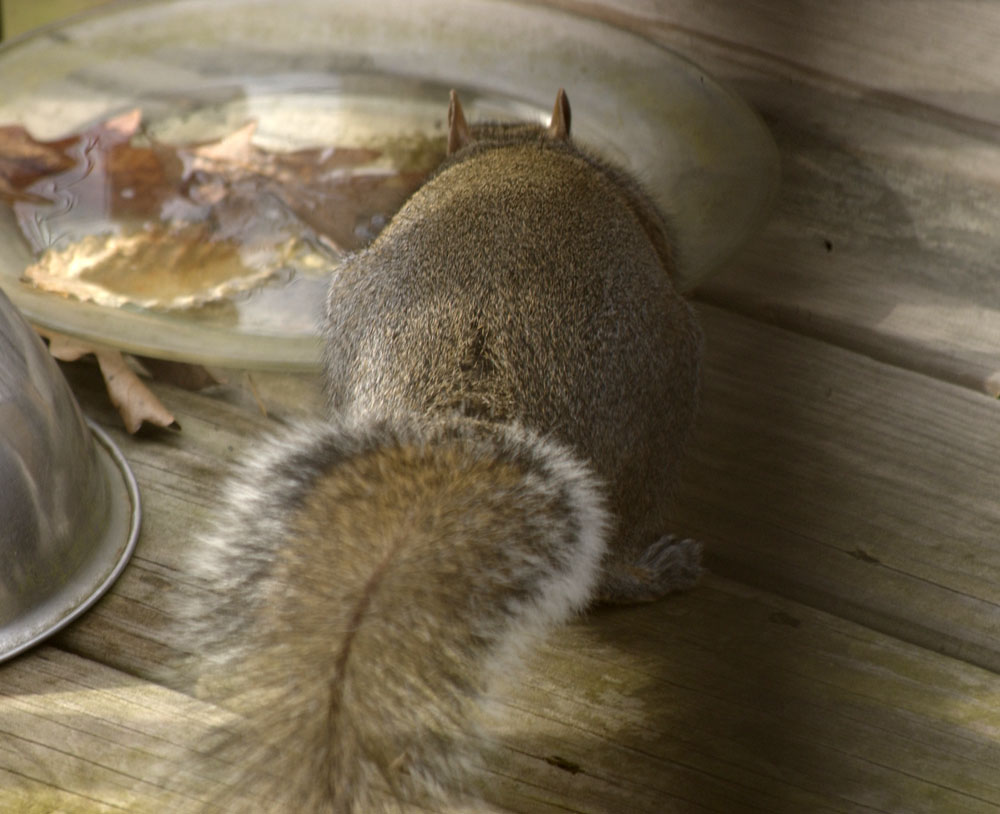
Mrs. Squirrel drinks rainwater from a plate left out on the deck.
Whenever I hear thumps and rattles on the back deck, and lots of little cat feet downstairs, I know that Mrs. Squirrel has come to tease Lily again. Mrs. Squirrel gets right up against the glass, knowing, apparently, that Lily can’t get at her. And then she casually lopes over to get a drink of water, her backed turned to Lily, flicking her tail to heighten Lily’s aggravation.
I like wild weather, and around here we’ve had our share of it this January. Yesterday we were under four watches — a flash flood watch, a severe wind watch, a severe thunderstorm watch, and then just after nightfall a tornado watch. When the front hit, it was brief but intense, with rain lashing the windows and the wind roaring. The storm left another 1.6 inches of rain, bringing the total rainfall for January to 10.15 inches. That is real rain, and most of it fell slowly enough to load the aquifer, which needed it badly. I’m just hoping that 2013 remains a good rain year, as 2012 was.
This morning colder air is blowing in. It was a beautiful morning for a winter walk. The storm left no damage other than a dustpan blown into the yard. The streams are gushing. And there is a mysterious hint of spring in the air, even though the low forecast for tomorrow is 18F.
Happiness is some woods, water rushing over rocks, healthy chickens, a rich garden, a snug little house, and not having to go anywhere: the way most Americans lived before we all took jobs and left the farm for, um, a better life. It’s fun to walk this place and pretend that it all never happened, that we never took that wrong turn. But we did. And it would be convenient to ignore the fact that forces much richer and more powerful than we are (see my previous post on the North Carolina General Assembly) are doing everything possible to continue to drag us under as fast as they can and to make it impossible to turn back.
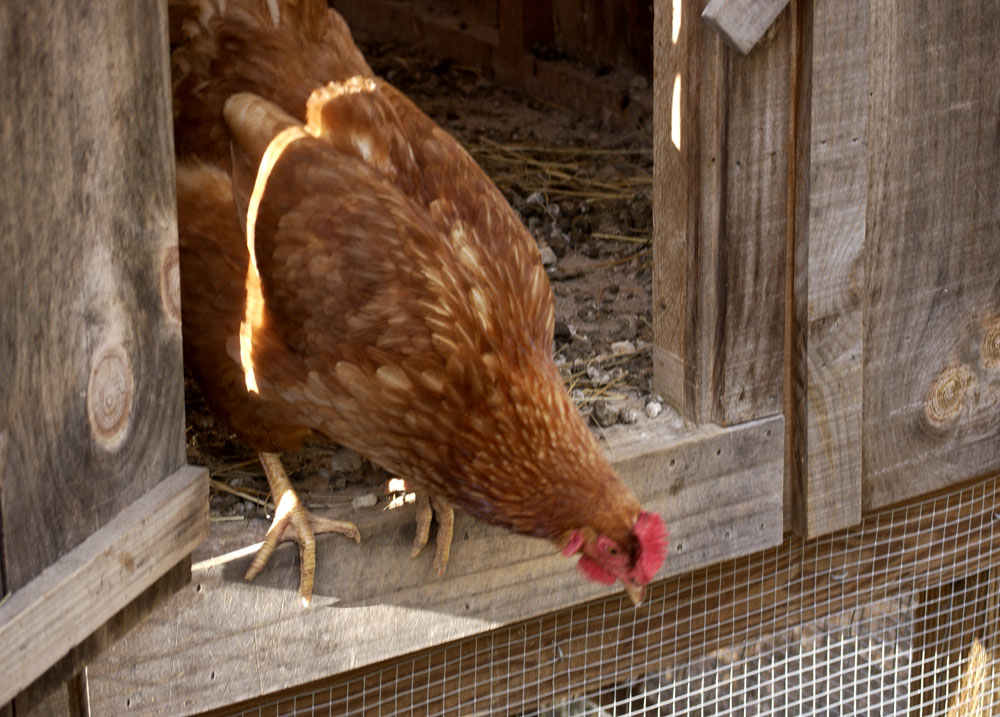
Fiona, who works harder than I do, starts her busy day.

The daffodils are up much too early. I hope they don’t regret it.
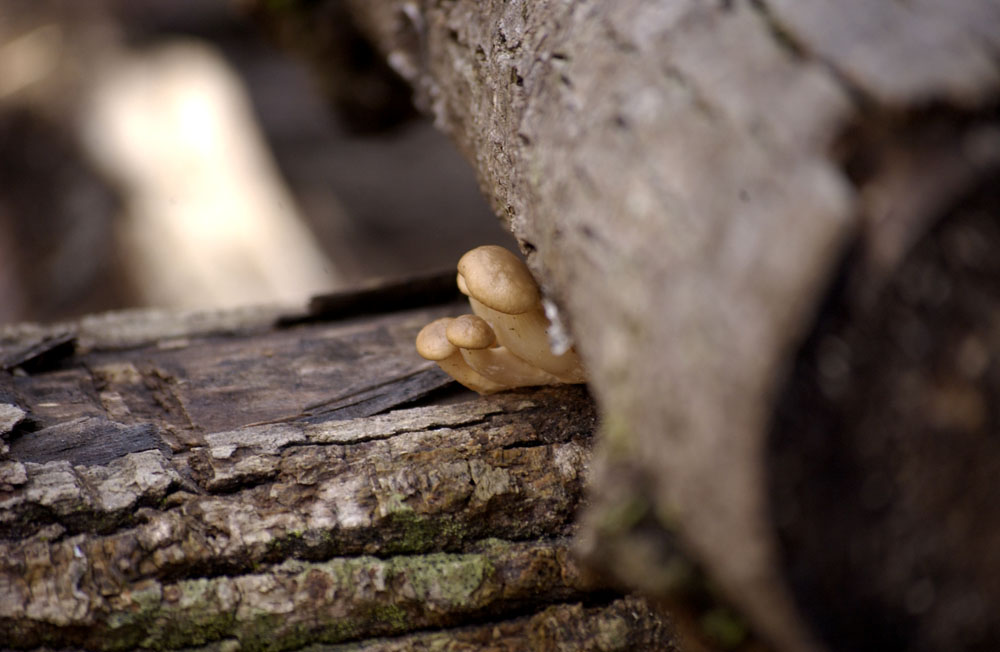
Shiitake mushrooms like their weather cold and wet.
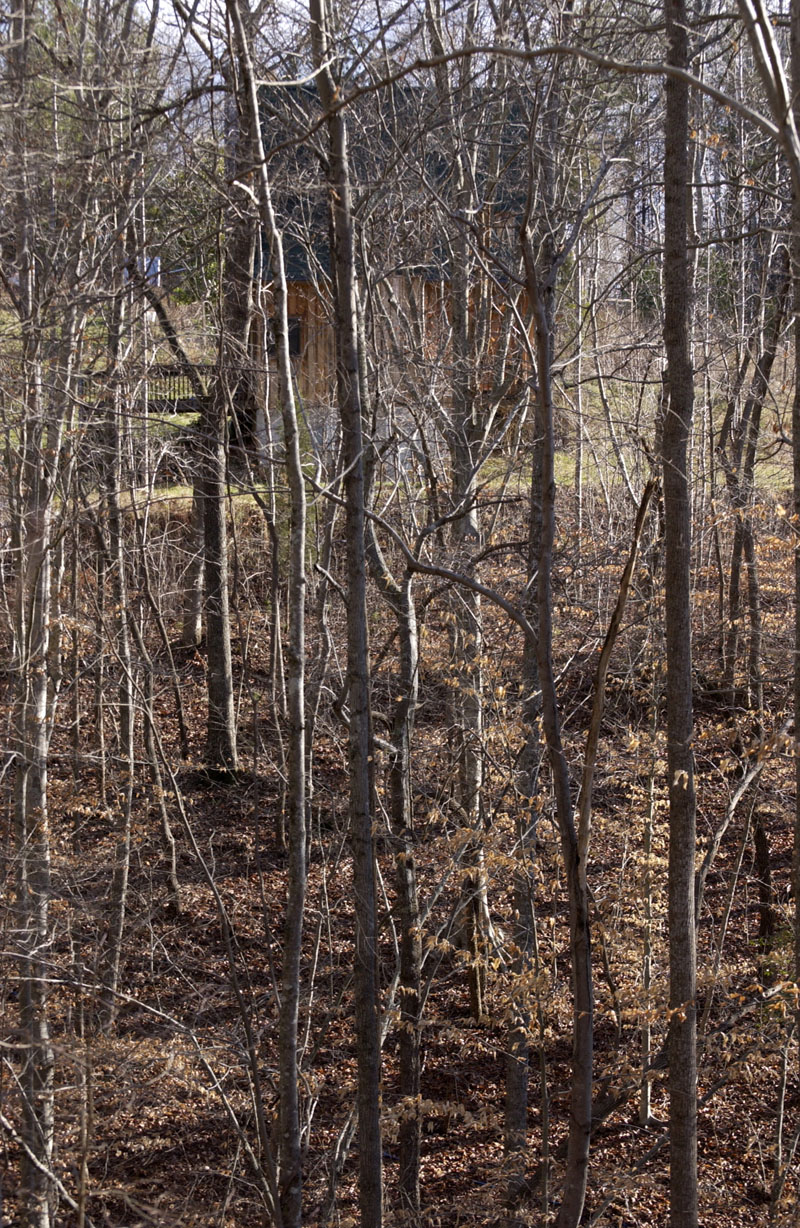
The abbey: sun to the front, garden and orchard to the right, woods to the left, and more woods in the back.
Raptors are common here. Though usually they’re soaring overhead rather than perched in the trees facing the abbey. I’ll let the chickens out later this morning, when I’m sure the coast is clear.
Update: A friend on Facebook identifies this as a sharp shinned/Cooper’s hawk and says that they don’t normally go after chickens. Judging from a Wikipedia photo, I believe this is a young hawk.